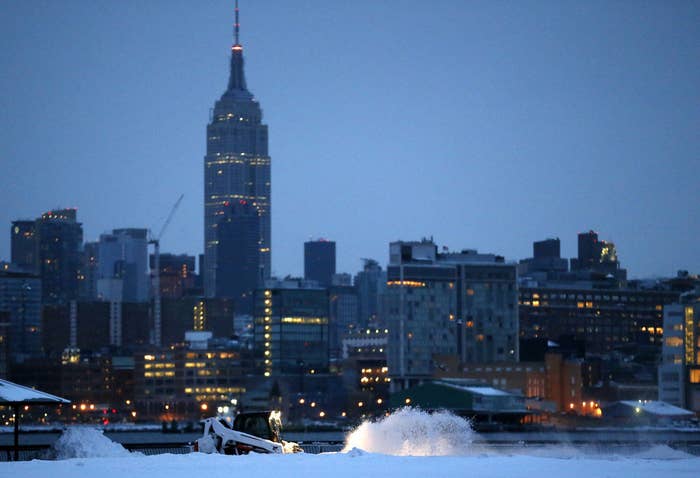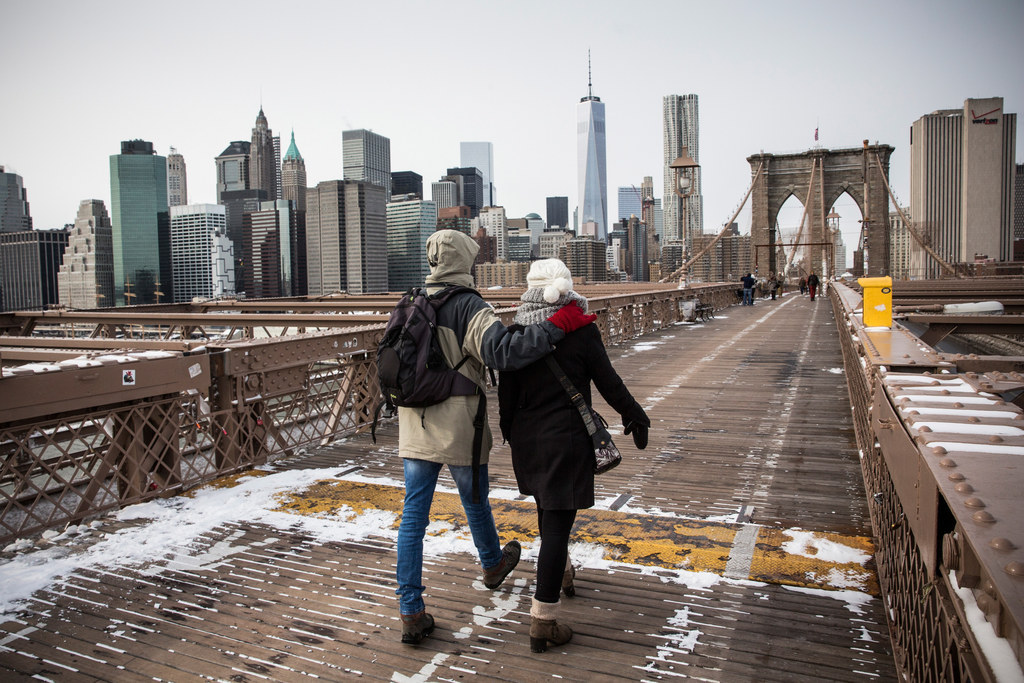
By now you may have heard: A massive storm forecasters said would be "potentially historic" and "life-threatening" in New York ended up largely sparing the city.
So what happened? Why did the storm appear to be such a clear danger that officials literally shut the city down, yet the dire forecast failed to materialize?
The National Weather Service (NWS) predicted 20 to 30 inches of snow in the city. In the end, less than half of that — 9.8 inches — fell in Central Park.
Tuesday evening, after the forecast failure was apparent, meteorologist Ryan Maue of WeatherBell Analytics, a private weather firm, chatted with BuzzFeed News about what happened. Maue described a series of missteps that ultimately led to the wildly overblown New York City snow predictions.
1. The storm came out of nowhere, relatively speaking.
Unlike a hurricane, the storm materialized very quickly. Maue said that in less than 24 hours it grew from basically nothing to a massive system off the coast of New England. That made the storm difficult to predict and offered few opportunities to adjust predictions, a routine procedure with hurricanes.
"Until the event is actually underway the numbers are hard to nail," Maue said. "It was a very difficult forecast."
2. Forecasters put "all their eggs in the wrong basket."
As the storm grew, forecasters with the NWS made a critical decision: They relied on a European computer model known as the ECMWF. The European model is very highly regarded, and Maue (who is not affiliated with the NWS) suggested forecasters trusted it due to its historic accuracy.
Jeff Masters of the Weather Underground further noted Tuesday that the European model was praised for accurately forecasting Superstorm Sandy.
"There was this built-in bias to choose the European model," Maue said. "What ended up happening is they looked at a couple of models and they put significantly more faith in those models than in other models."

But the ECMWF got it wrong this time. Or at least, the model didn't accurately forecast the western edge of the storm, which ended up passing east of New York City rather than going over it. And that meant that the NWS also got it wrong. Late Monday, when that became clear, NWS meteorologist Gary Szatkowski took to Twitter to apologize for the error.
My deepest apologies to many key decision makers and so many members of the general public.
You made a lot of tough decisions expecting us to get it right, and we didn't. Once again, I'm sorry.
Curiously enough, not everyone got the forecast wrong. As Slate pointed out, The Weather Channel had a more accurate forecast. Maue's team at WeatherBell, which was looking at multiple models, also saw the potential for more moderate snowfall in New York City.
"Our range was more 12 to 18 inches," Maue said "That was more consistent with looking at all the weather models put together."
The NWS itself, however, had already chosen to trust the ECMWF.
"Historically they thought one model was better than another," Maue said. "It turns into just the humans in this case put their eggs in the wrong basket with the weather model."
3. The level of "certainty" that the storm would hit New York City was never really communicated.
More than anything else, the experience most New Yorkers had during the storm probably boiled down to one thing: certainty.
Maue explained that even with the models, nothing is guaranteed. Most people are familiar with this idea from ordinary weather forecasts.
"If there's a 50% chance of rain," he said, "probably half the people are going to leave their umbrella at home. If there's a 90% chance, they'll take the umbrella."
But as this week's powerful storm approached, the public was apparently left with the impression that a historic blizzard was all but certain.
"There was this idea that there was a high level of confidence or certainty," Maue observed Tuesday. That in turn led to extreme preparations such as the subway and office closures.

Louis Uccellini, director of the NWS, confirmed this Tuesday. During a conference call with reporters, Uccellini said "it is incumbent on us to communicate forecast uncertainty." He also said the weather service would reach out to social scientists to figure out better ways to improve its messaging.
Maue expects this storm to result in more conservative forecasting and a more skeptical public. Still, he said he continues to trust forecasters with the NWS, even if the models weren't perfect this time.
"It ended up just being a bad public display of what happens when a forecast goes bust," he said. "But it's always best that the busts happen on the false-alarm side."
